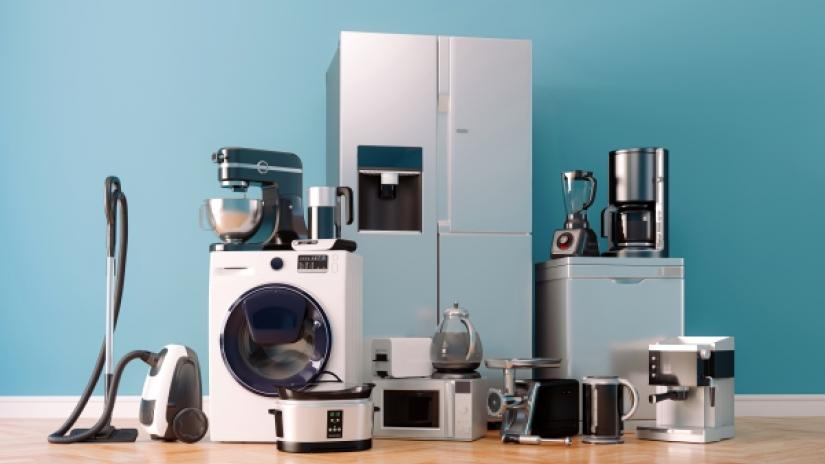It’s hard to overstate the convenience that home appliances bring us. They also account for the brunt of our electricity bill—especially if the home has an electric furnace/boiler and water heater.
Let’s look at some usual suspects when it comes to appliance electrical usage.
Top 10 Appliances That Use the Most Electricity
It’s hard to rank appliances by electricity use because age, model, size, and frequency of use will all influence how much electricity is used by each appliance.
Another important factor to consider with appliances is that many people have gas models of certain appliances that use some electricity, but nowhere near as much as their electricity-only counterparts. For example, a gas dryer will still use some electricity, but an electric dryer will use a lot more.
With that in mind, these ten appliances and fixtures are often the ones that use the most electricity:
- Electric furnace/boiler
- Central air conditioner
- Electric water heater
- Refrigerator
- Dryer
- Electric oven/stove
- Lighting
- Dishwasher
- Television
- Microwave
Do Appliances Use Electricity When Plugged in But Turned Off?
A frequently asked question, especially for people looking to save some money on their bills, is whether appliances use electricity when plugged in but turned off, and the answer is yes. According to estimates from the US Department of Energy, as much as 10% of appliance energy usage occurs while the device is “off.” (Devices that draw electricity from the grid while “off” are referred to as “energy vampires.”)
You might ask how this is possible, as being turned “off” should stop the need for electricity, right? Well, that clock on your microwave or stove must get power from somewhere, and even things as small as the red standby light on your television need constant electricity.
If you’re looking to reduce this energy drain, unplugging rarely used appliances can help.
How to Measure Electricity Used by an Appliance
The easiest way to measure the power usage of a single appliance is to use an electricity plug monitor. These monitors come in various shapes and styles, but all stick to the main principle of being plugged into an outlet and then having an appliance plugged into them. The plug monitor measures and displays the amount of energy pulled by the appliance. Newer models will even send the information to a phone app.
Can Faulty Wiring Increase Electric Bills?
Yes, poor wiring can result in electrical “leakage,” where your appliances will draw more power than normal to compensate for the lost energy. Anytime your wiring has loose connections, either inside the appliance or the wiring feeding the appliance, heat is generated. Heat in an electrical system is lost energy not producing work. Loose connections can also cause more serious problems in your home if not corrected. A loose connection will continue to create more heat until the insulation on the wires begins to melt and burn. If not detected, the heated wiring can burn back the insulation until it comes in contact with more combustible materials that can ignite and cause a fire. Therefore, the problem might not be the appliance, but rather the wiring that supplies power to them. An electrical inspection can help identify potential issues within your existing wiring.
Turn to the Pros for Your Electricity Needs
Electricity is dangerous, so it’s always best to leave electrical repairs and upgrades to service professionals you can trust. To schedule service with us give us a call today.

